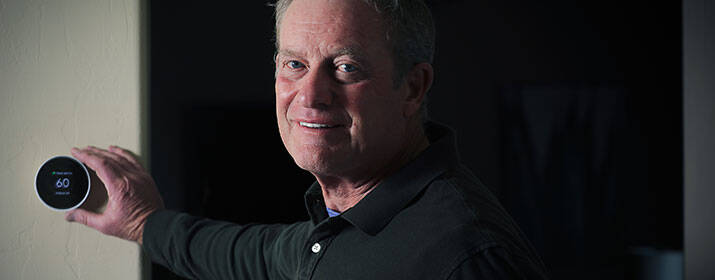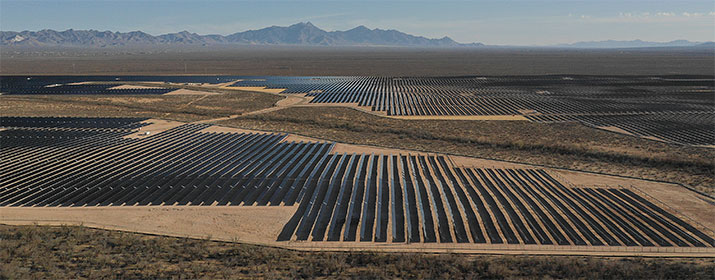
As Pricing Manager, Rick Bachmeier is very familiar with UniSource’s residential pricing plans. In fact, one of his first tasks after joining the company in late 2014 was to design a new rate structure that included Demand and Time-of-Use (TOU) rates.
Bachmeier knows these plans potentially offer customers significant savings if they can use less energy and shift their usage to off-peak times. But he was pleasantly surprised to save thousands of dollars on his electric bills when he switched to TOU plans.
He and his wife were on the Basic pricing plan, which charges a higher flat rate per kilowatt hour for electricity regardless of when it’s used. In early 2015 they switched to the TOU plan and then changed again in late 2017 to the Demand TOU plan. Bachmeier says he has saved a bundle over the past five years.
“I’ve been keeping track of my monthly bills to calculate what I would have paid on the Basic plan and what I’ve saved. I also monitor my energy usage online,” he said. “I’ve saved about $2,150 over five years using the Demand TOU rate when compared to the Basic pricing plan, and about $1,600 when compared to TOU plan.” He said his average monthly saving has been about $28 or $330 a year after moving from TOU to Demand TOU.
UniSource Energy Services offers four residential electric pricing plans: Basic, TOU, Peak Demand and Demand TOU. On the TOU and Demand TOU plans, customers need to shift their energy usage to off-peak hours and reduce overall energy usage to lower their bills.
The Demand TOU pricing plan offers the lowest usage-based rates for off-peak hours, but higher rates during on-peak hours along with a monthly “demand” charge based on your highest hourly usage during on-peak hours. The Peak Demand TOU plan offers flat usage-based rates that are lower than the Basic rate but also have a monthly demand charge.
Customers can save the most money with these demand plans if they limit energy usage during on-peak hours from 6-9 a.m. and 6-9 p.m. during the winter and 3-7 p.m. in the summer.
“There is a fear about the higher demand rates charged during on-peak hours that needs to be overcome. If you can get over that fear and make a few behavioral adjustments, you will be just fine. You are paying a demand charge, but your energy delivery rate is cut by more than half,” said Bachmeier, noting that there are no on-peak hours or demand charges on weekends, making them an ideal time to do chores that use a lot of energy, such as laundry.
Besides changing plans, Bachmeier also was mindful about how he used energy and made some adjustments, especially during on-peak hours:
- Replaced all incandescent bulbs with LED bulbs
- Avoids using larger appliances and smaller electric resistance appliances – such as hair dryers and toaster ovens – during on-peak hours
- Installed two smart thermostats and programed them to align with TOU hours
- Upgraded his major appliances with ENERGY STAR® certified models
- Pre-cools the home during off-peak hours in hotter months and then raises the thermostat to 80 during on-peak hours
- Uses ceiling fans to make it feel cooler indoors during the summer
- Replaced his single-speed pool pump with a high efficiency variable-speed pool pump, which is programmed to run during off-peak hours
“Our home is about 20 years old, but thankfully it is well insulated,” Bachmeier said. “We’ve been able to make behavioral changes because it’s just my wife and me in the home. It would be more challenging for families on demand pricing plans because everyone in the household would need to be on the same page, but it can be done.”
Bachmeier said electricity is a strange product because customers often don’t know how much they’re using and buying until they receive their monthly bill. “Customers having more information about their energy usage is a good thing. Selecting the right pricing plan and knowing where you are midway through the month can help you lower your energy costs.”






